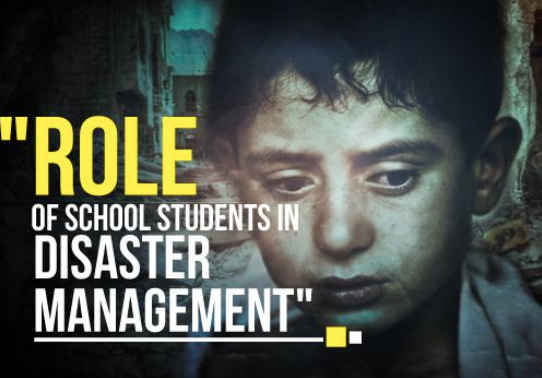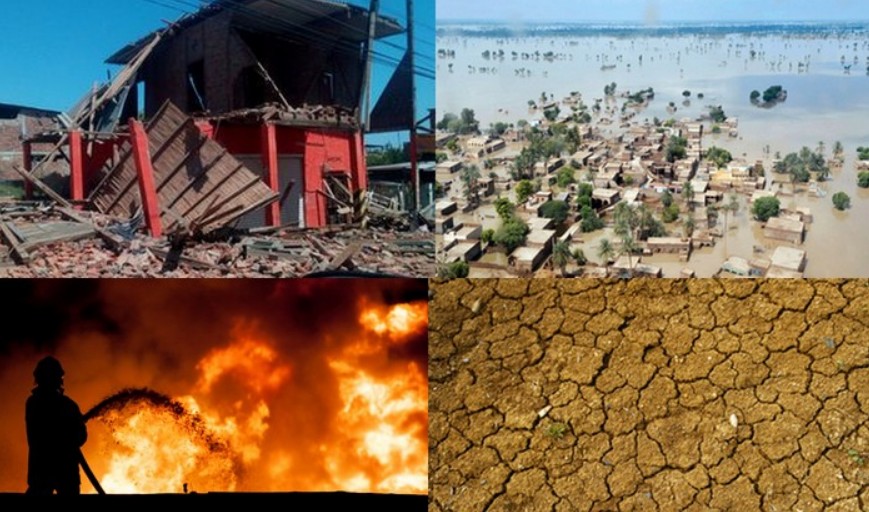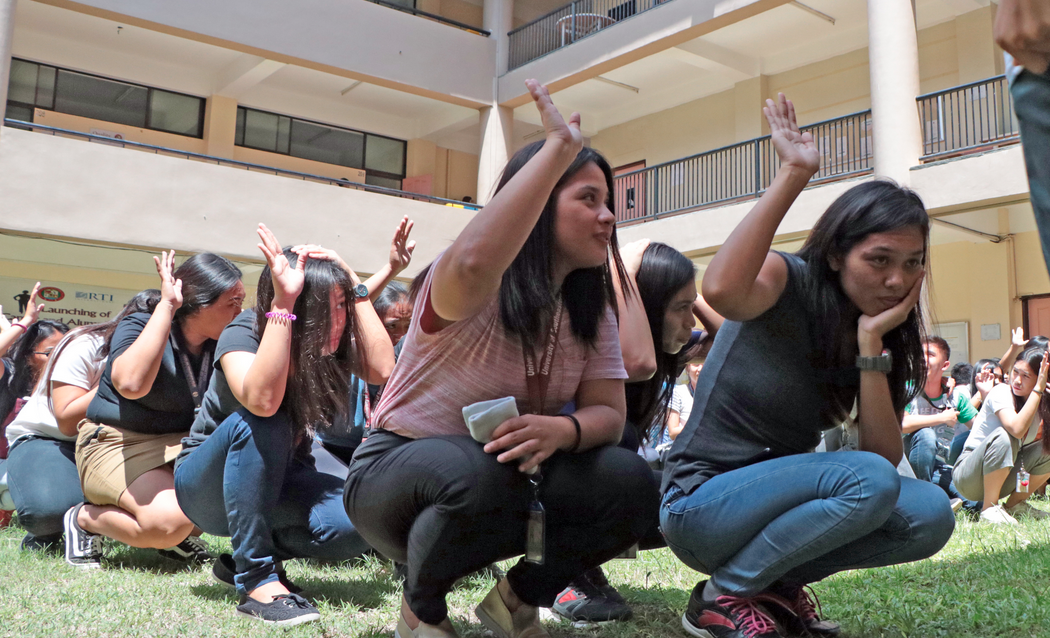This article is written to provide you with valuable insights into disaster management for high school and college students and schools involved, offering a complete note of key concepts. Disaster management is how we deal with the human, material, economic or environmental impacts of said disaster at a time.
Sometimes, disasters happen without any warning in our neighborhoods. It is essential to be ready to act fast, as this can rescue people and prevent harm.
Disaster management includes getting ready, acting in emergencies, and recovering afterward in a given environment or circumstance.
Learning about this helps students see how communities can stay strong. This essay gives an introduction to important disaster management ideas for students.
Disaster Preparedness Knowledge, Beliefs, Risk comes in different ways. It is through education that disaster risk reduction efforts are expected to be able to achieve broader goals and can be introduced earlier to all students. College students could play a primary role in responding to and recovering from a major disaster if they have sufficiently prepared for a disaster.
Through Disaster Risk Reduction education every child or student learns to protect themselves in the case of a natural disaster and gains. But how will they address this issue with an important contribution to the social disaster management studies? You will find out in this article.

What is a Disaster
A disaster is when something really bad happens in a community, and it is so bad that the community can not handle it on its own. These bad things can be because of nature, like floods or earthquakes, or because of people, like fires or wars.
Some key facts about disasters:
- Disasters can happen out of the blue, without much warning.
- The impact of disasters can stick around for a long time.
- Disasters often harm important things like roads, bridges, and power lines.
- Disasters can hurt some groups more than others, like women, children, old people, and poor people.
What is Disaster Management?
Disaster management is getting ready for, dealing with, and getting better after disasters happen. The aim is to make the bad effects of all kinds of dangers, even disasters, not as bad.
The Main Elements of Disaster Management include:
- Mitigation – Doing things to make disasters less likely and less harmful. This means checking what might go wrong.
- Preparedness – Getting ready and planning for when a disaster happens. This means practicing, getting supplies, and knowing what to do.
- Response – Acting quickly before, during, or after a disaster to save lives and reduce harm. This means giving emergency help.
- Recovery – Getting the community back to normal after a disaster. This means fixing what is broken and making things work again.
Disaster management needs everyone to work together, like government groups, charities, businesses, and everyone in the community.

Disaster Management Plans
Communities create disaster plans to explain how they will handle all parts of disasters. These plans help make the community stronger and better at handling disasters.
Good disaster plans usually include:
1. Mitigation
- Finding out what dangers are out there and figuring out how likely they are.
- Doing things to make those dangers less likely and less harmful, like:
- Making sure our buildings and roads are strong and safe.
- Making sure people follow rules when building.
- Teaching people how to stay safe.
- Keeping our environment healthy and safe.
2. Preparedness
- Making plans for what to do during an emergency.
- Setting up systems with clear jobs for everyone involved.
- Getting the right tools and supplies to respond to emergencies.
- Training people to follow the plans and do their jobs.
- Practicing and testing the plans and skills in practice runs.
3. Response
- Opening special centers to control the emergency response.
- Searching for and saving people who might be in danger.
- Giving medical help to those who are hurt.
- Making sure everyone has things they need, like food and shelter.
- Keeping people informed and connected during the emergency.
4. Recovery
- Checking what got damaged and making plans to fix it.
- Fixing important things like roads and power.
- Offering help for mental health and social needs.
- Rebuilding houses, businesses, and public places.
- Getting things back to normal, like jobs and services.
When communities have detailed plans for every part of disaster management, it helps them reduce damage and get back to normal faster when disasters happen.
Essay on Disaster Management for Students
Disaster management’s main goal is to reduce the bad effects of emergencies and disasters. It involves finding risks, making plans, teaching people, getting resources ready, reacting quickly to save lives, and helping communities get better.
Disaster managers make communities stronger by looking at dangers, making them less dangerous, planning for emergencies, teaching people, getting ready with supplies, practicing, making safety rules, telling people what is happening, helping them leave if needed, giving a safe place to stay and help, bringing back important services, supporting emotional recovery, and rebuilding. With careful planning and working together, disaster managers help communities get back to normal after disasters.
Essay on Disaster Management
Disasters can bring a lot of damage and suffering, but if we plan ahead, we can reduce the bad effects on people, things, and the environment.
- Prevention means doing things like planning where we build, making rules for safety, and teaching people to watch out for dangers.
- Mitigation means making things stronger, setting up warning systems, and protecting natural places like wetlands or forests.
- Preparedness is getting ready with plans, training people to help, getting supplies, teaching everyone, and practicing for emergencies.
- When there is a disaster, we have to act fast to save lives, move supplies, set up safe places, find missing people, and keep things in order.
- After the disaster, we fix what is broken, get things working again, give money to help, and make sure everyone is okay.
To do all this, we need everyone in the community to work together. The government, helpers, businesses, and regular people all need to help each other to be stronger and recover faster after disasters.
Essay on Disaster Management
Disasters can be really tough for communities, whether they are natural like earthquakes and floods or human-made like fires and wars. They can cause a lot of damage and problems if communities are not ready.
To be ready, we have to plan ahead. This means finding out what might happen, teaching people how to stay safe, making plans for when things go wrong, getting supplies ready, training special helpers, practicing what to do, and setting up ways to warn people if something bad is coming.
When a disaster does happen, we have to save people, help those who are hurt or have to leave their homes, give them food and shelter, fix what is broken, keep things in control, and let people know what is happening.
After the disaster, we have to figure out what got damaged, rebuild what is broken, get jobs and services back, give money to help, and make sure everyone is doing okay. It can take a long time to get back to normal.
To do all of this, we need everyone to work together – the government, businesses, helpers, and regular people. When everyone helps each other, communities can get through disasters with less damage and get back to normal faster.

Essay on Disaster Management
Disasters can cause a lot of damage and suffering. But if we plan carefully and work together, we can make communities stronger and better at dealing with them.
Disaster Management Plans
Disaster plans help communities become stronger by looking at everything they need to do in case of an emergency. They find out what could go wrong and make sure everyone knows what to do. Plans also say who is responsible for what when a disaster happens.
Key elements of disaster management plans include:
Mitigation
To be prepared for disasters, we need to:
- Find out what could go wrong and who might be affected.
- Figure out how bad things could get and what might get damaged.
- Make things safer by making buildings stronger, protecting nature, having good rules, and telling people how to stay safe.
Preparedness
- Make plans for what to do if something bad happens, and write down how to do it.
- Get all the things we might need, like equipment and supplies.
- Work together with others and agree to help each other when it is needed.
- Teach people what to do, and practice it like a game to get better at it.
Response
- When a disaster happens, we have to:
- Set up special places to manage the emergency and tell people what to do.
- Tell everyone what is happening and how to stay safe, and help them leave if needed.
- Save people and put out fires, help the injured, and keep things under control.
Recovery
After a disaster, we need to:
- Find out what is broken and make plans to fix it.
- Clean up the mess and make sure we have electricity, water, and other important things.
- Help people feel better and provide counseling.
- Rebuild homes, businesses, and things that got damaged.
Challenges of Disaster Management
Disaster management can be tough because there is not always enough help, disasters can happen suddenly, and it is hard to get everyone to work together. People who are already struggling might have an even harder time. Politics can make things more complicated. To overcome these challenges, we need to plan together, be respectful of different cultures, have clear rules, and be ready to change our plans when needed.
Conclusion of Disaster Management for School Students
Because the weather is getting more great and proper to climate change, disasters might happen more often and be worse. It is important to plan and work together to be ready. Students who learn about disaster management can help out in the future when emergencies happen.
Related Article
- 500+ Words Disaster Management Essay for Students and Children
- Reasons Why its Possible for Education to Transform the World to a Better Place
- Hybrid Cloud Solution: Uses, Example Companies, Comparison, Benefits and Challenges
- Hybrid Cloud Technology: Bridging the Gap between Private and Public Clouds
- The Process of Becoming a Substitute Teacher with or without Degree







